Connect to Dropbox (Legacy UI)
Nexla's bi-directional connectors can both send data to and receive data from any data system. This means that once a user has created or gained access to a credential for any data system, building any data flow to ingest data from or send data to a location within that data system requires only a few simple steps.
1. Credentials
This section provides information about and step-by-step instructions for creating a new Dropbox credential in Nexla.
1.1 Connect Nexla to the Dropbox Account
-
After selecting the data source/destination type, in the
screen, click
 . This will open a pop-up authorization window.
. This will open a pop-up authorization window.
-
Follow the instructions below to authorize Nexla to connect to the Dropbox account.
-
Dropbox Accounts Tied to Another Account Type:
-
To sign into a Dropbox account associated with another account type, such as a Google or Apple account, click the button corresponding to the account type.
Here, a Google account is used as an example.

-
Sign into Dropbox by selecting the associated account.

-
Click
 to authorize Nexla to access the files and folders in the Dropbox account.
to authorize Nexla to access the files and folders in the Dropbox account.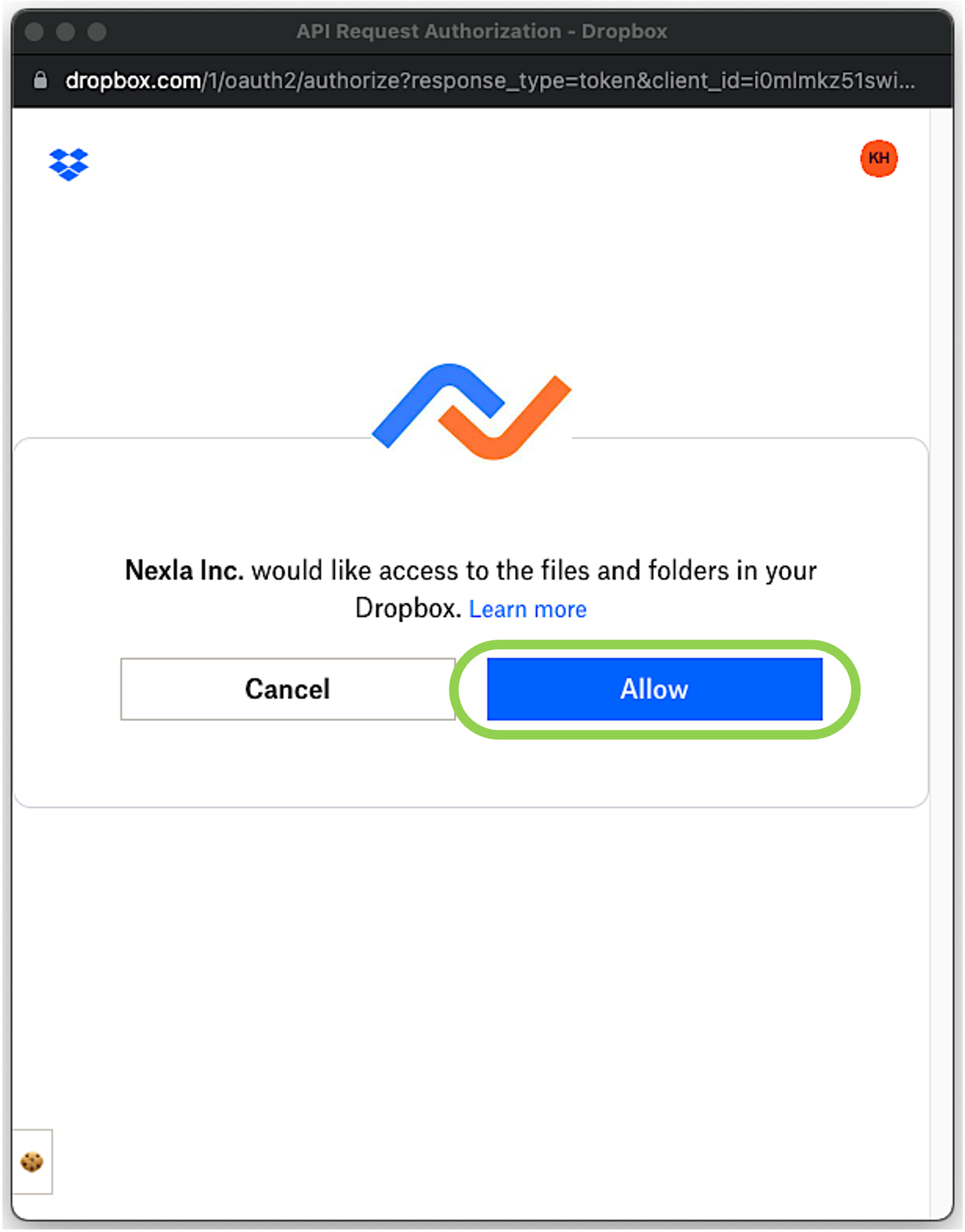
-
-
Sign into Dropbox with an Email & Password:
-
Enter the email associated with the Dropbox account in the Email field.

-
Click
.
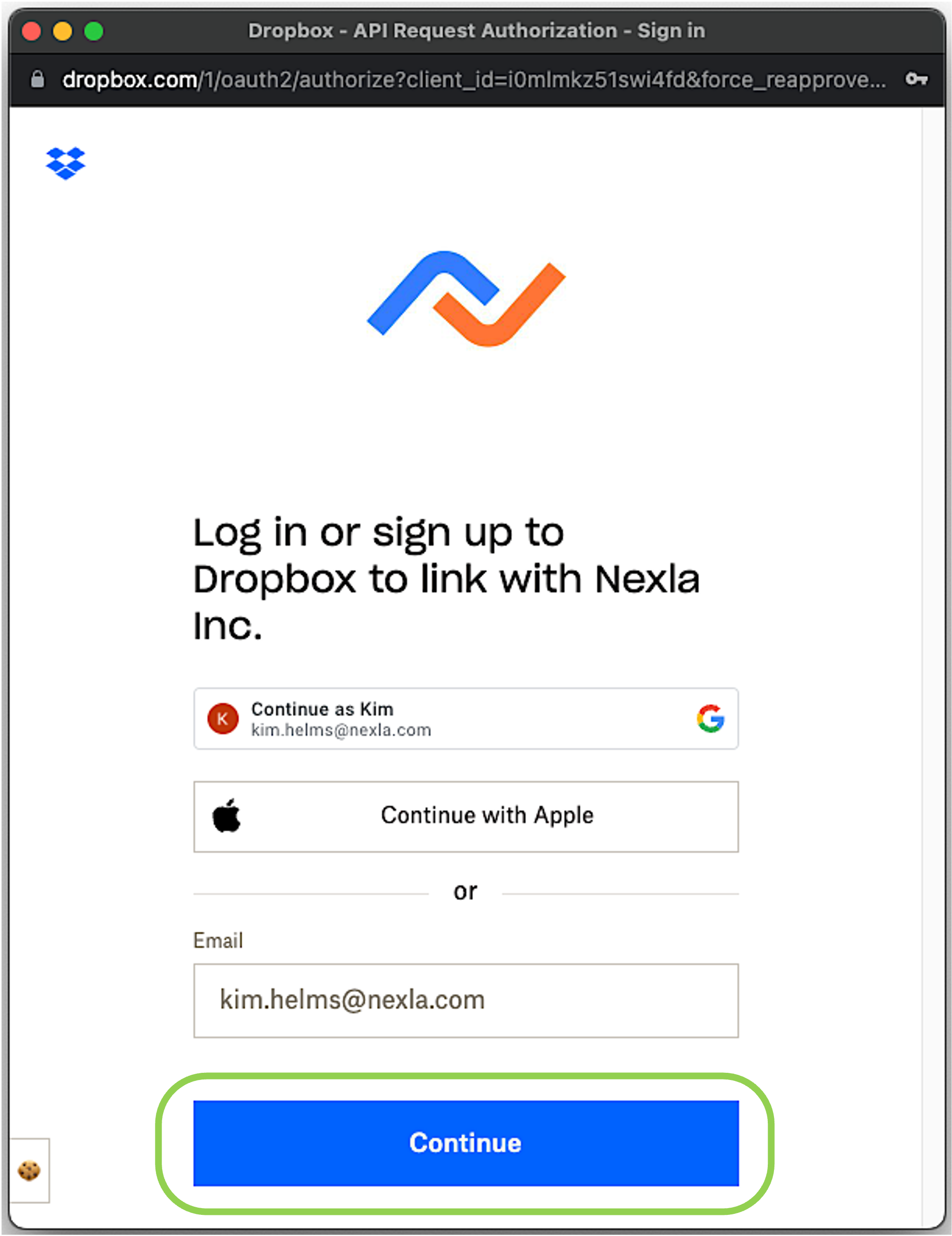
-
Enter the password for the Dropbox account in the Password field.
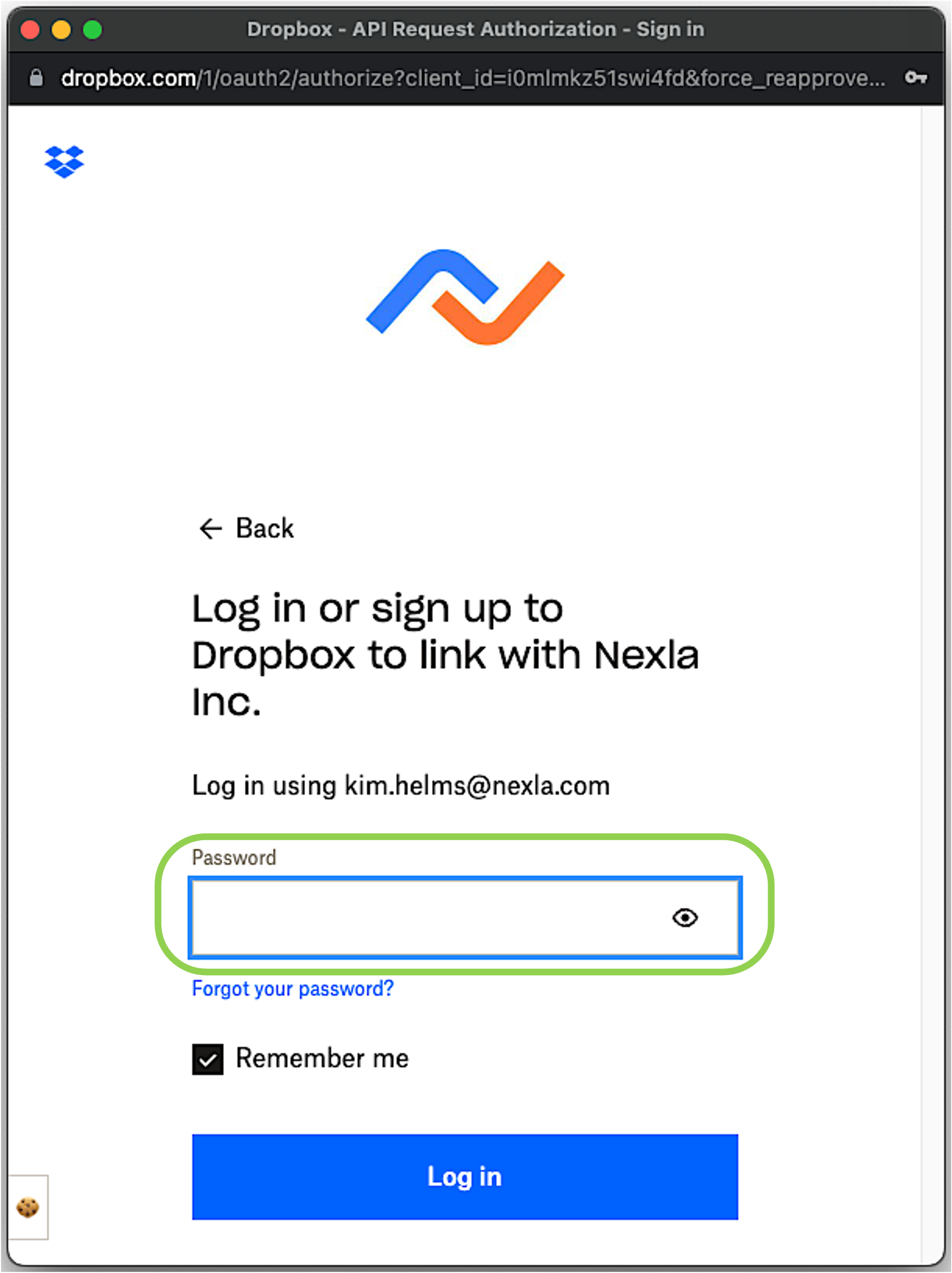
-
Click
.
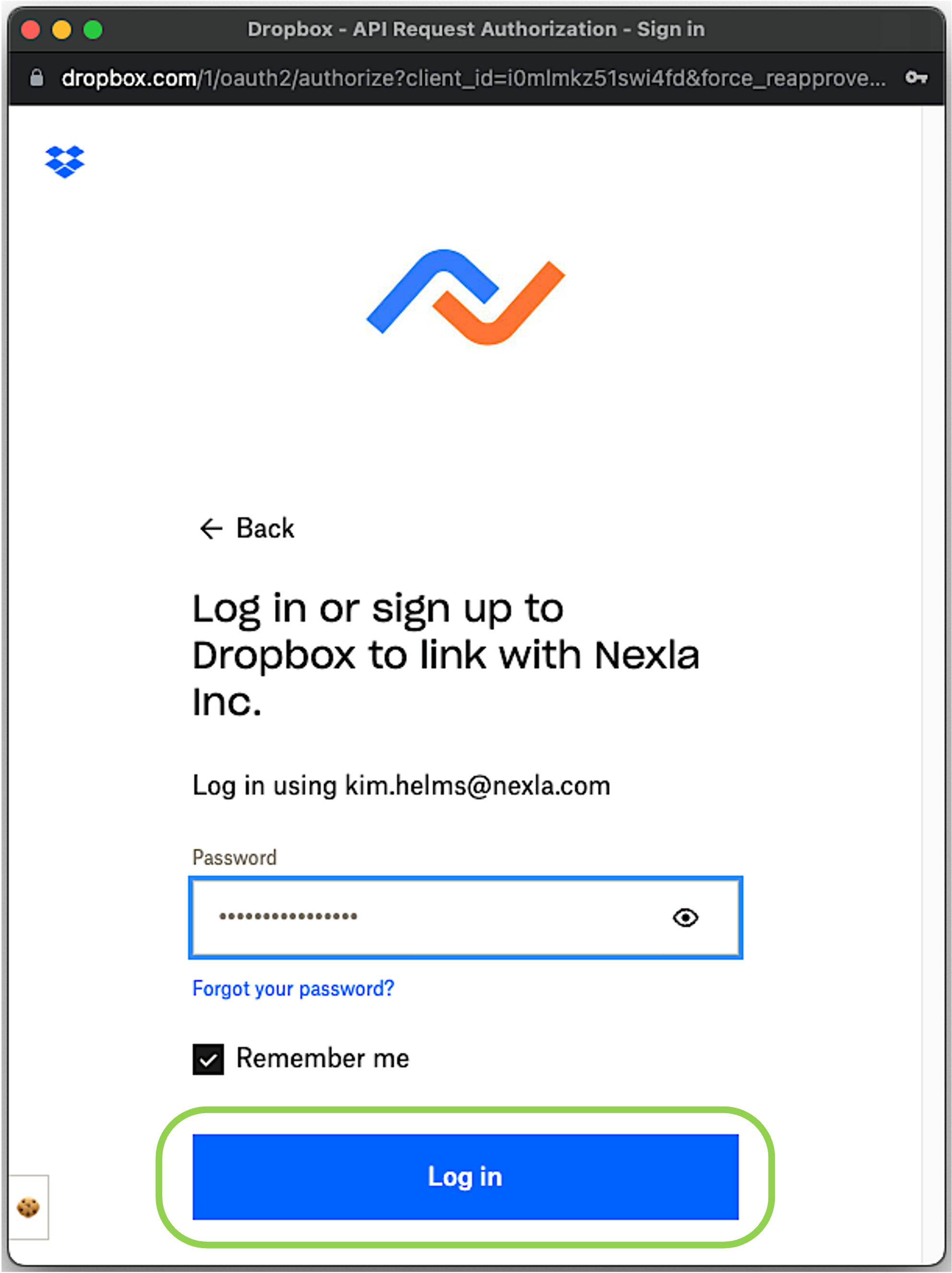
-
Click
 to authorize Nexla to access the files and folders in the Dropbox account.
to authorize Nexla to access the files and folders in the Dropbox account.
-
-
1.2 Configure the Credential
The instructions in this section correspond to the Add New Credential window.
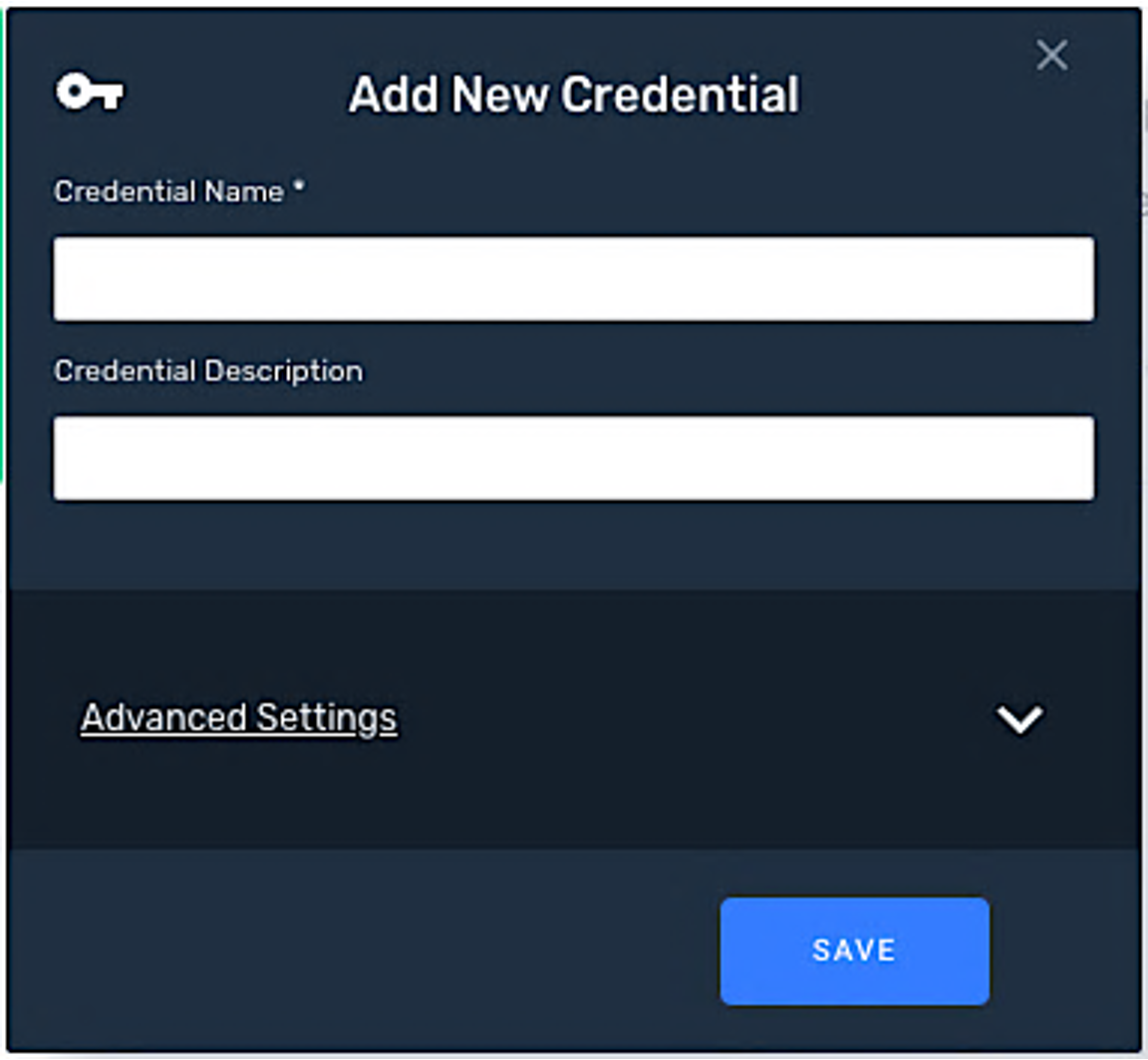
-
In the Add New Credential window, enter a name for the credential in the Credential Name field.

-
Enter a description of the credential in the Credential Description field.
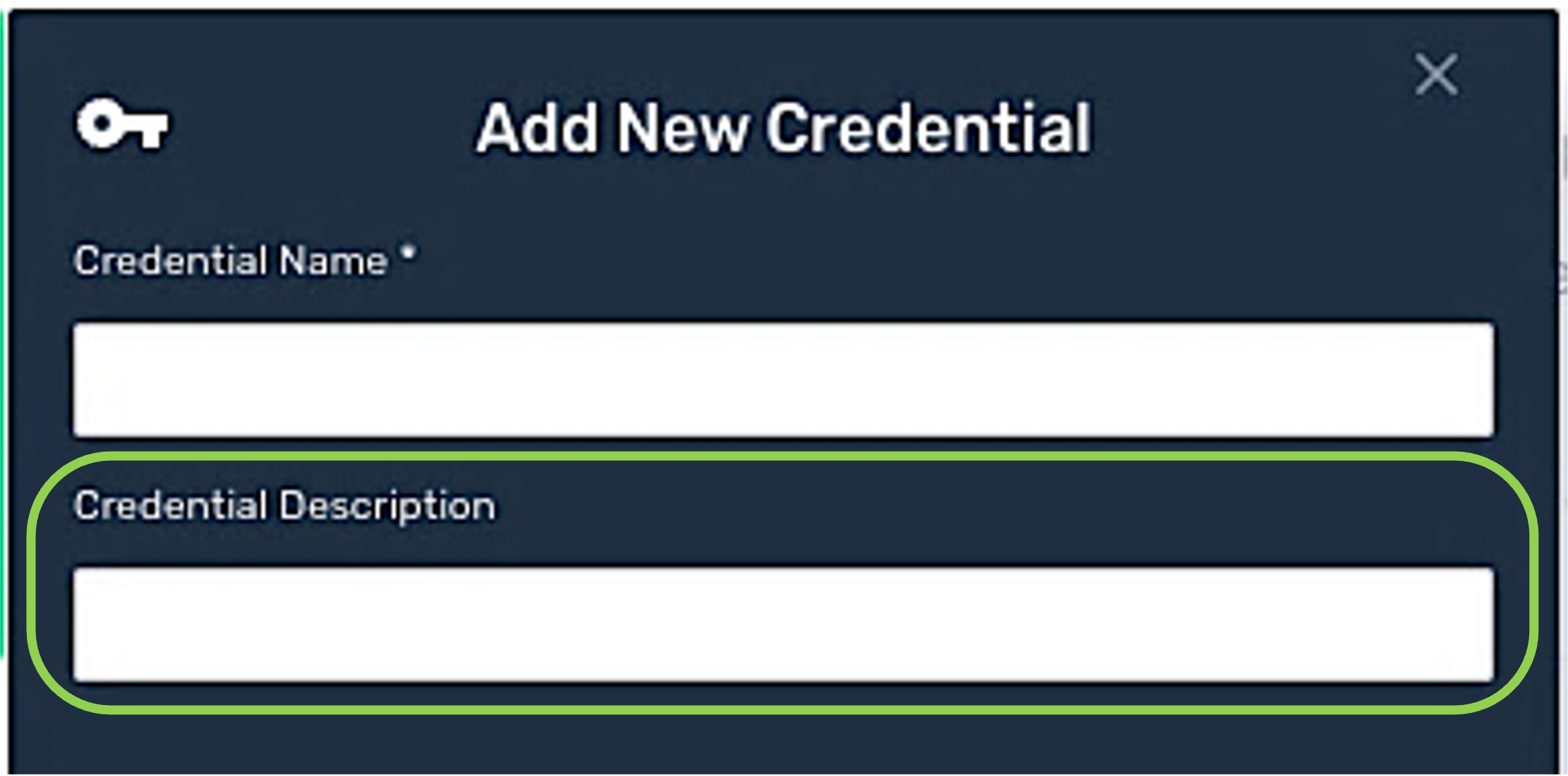
-
- To configure Nexla to handle file encryption/decryption, continue to Section 1.3.
- To create the credential without configuring file encryption/decryption, continue to Section 1.4.
1.3 Advanced Settings – File Encryption/Decryption
Nexla can be configured to process encrypted files such that a data source connected to this credential will decrypt files before ingestion, and a data destination connected to this credential will encrypt generated files before uploading to the S3 storage location.
-
Click
to access additional available settings for the credential.
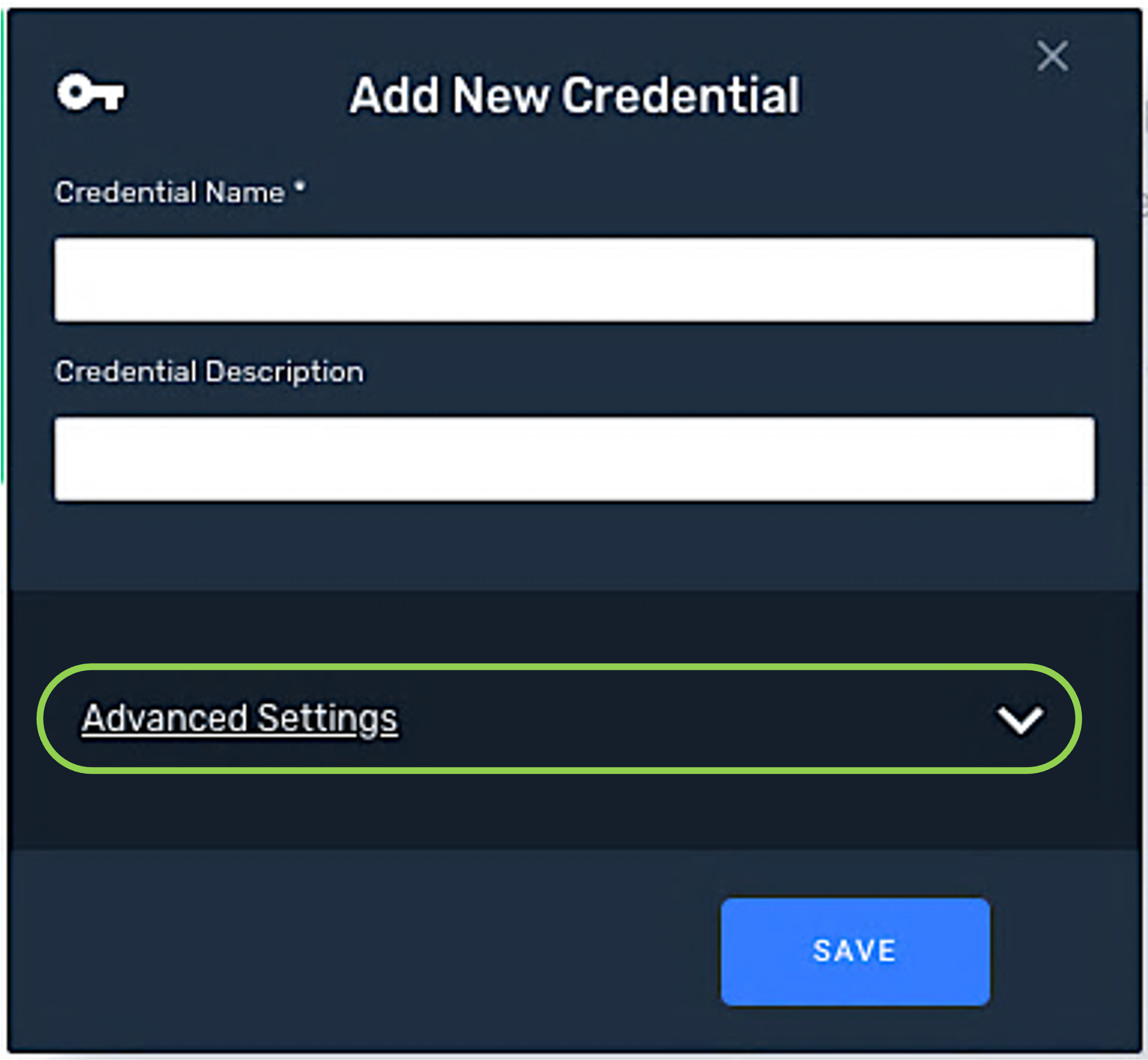
-
To configure Nexla to encrypt/decrypt files when accessing Dropbox via this credential, check the box next to "Handle File Encryption/Decryption?".
When this option is selected, for Dropbox data sources/destinations created using this credential, Nexla will decrypt files from the source before ingestion and will encrypt files before uploading them to the destination.
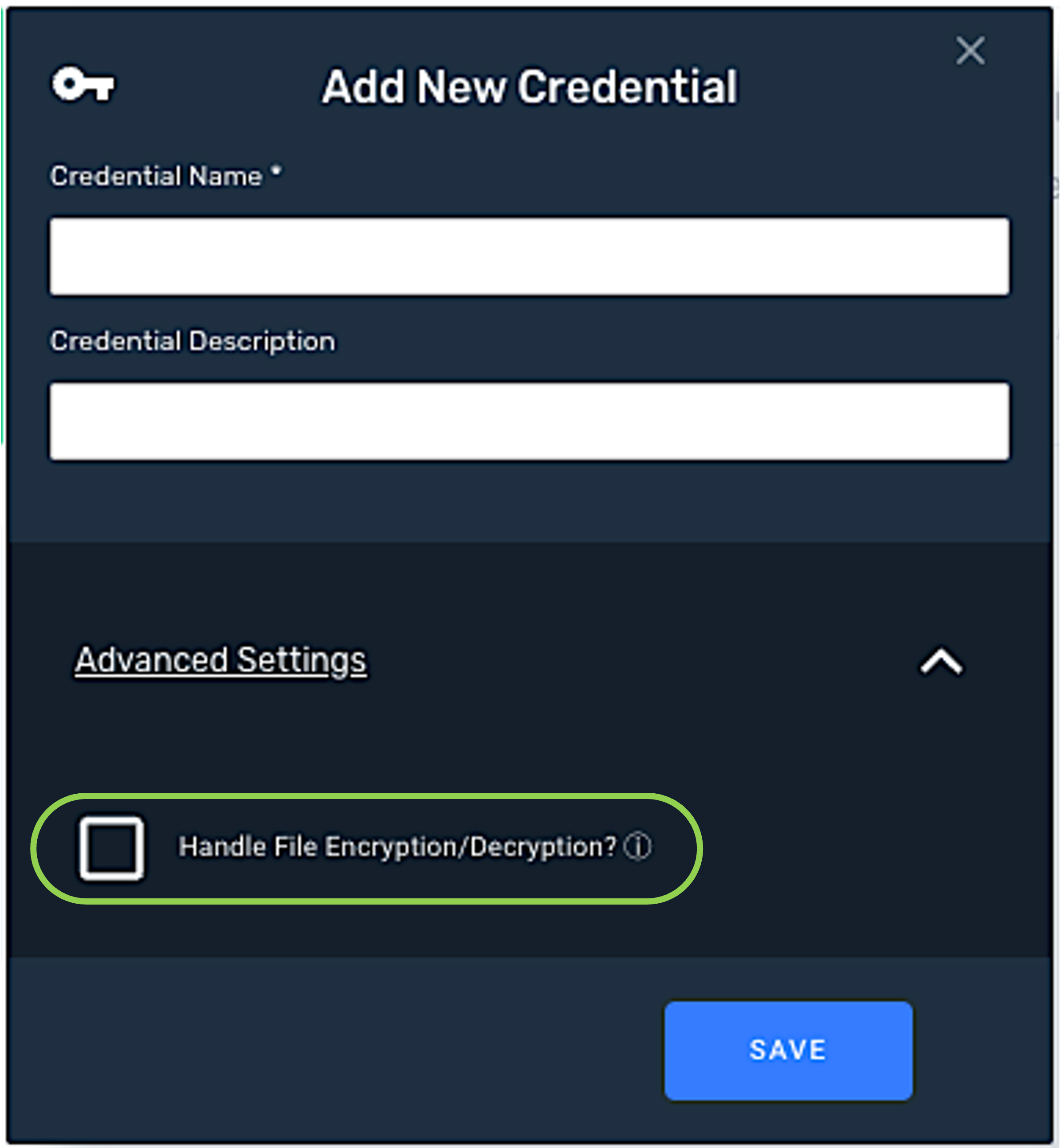
-
Select the type of file-encryption protocol that should be used to encrypt/decrypt files from the list of available protocols in the File Encryption Protocol pulldown menu.
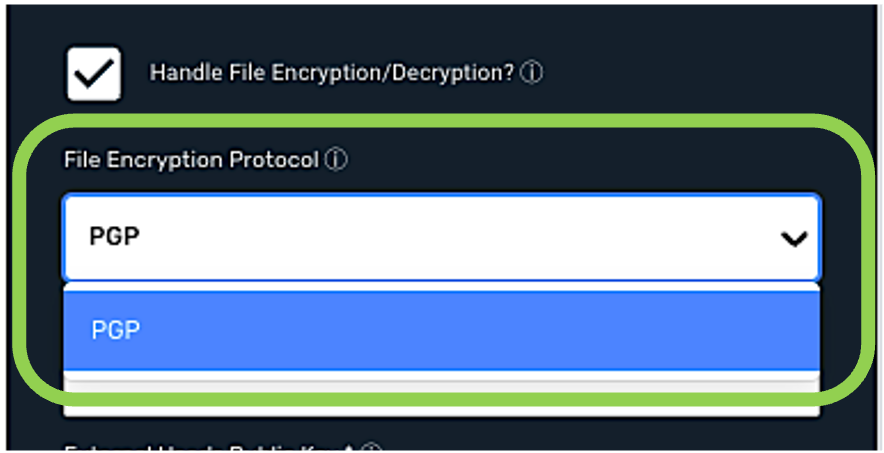
-
PGP Encryption
-
Enter the ID of the user whose public key will be used for file encryption/decryption in the External User ID field.
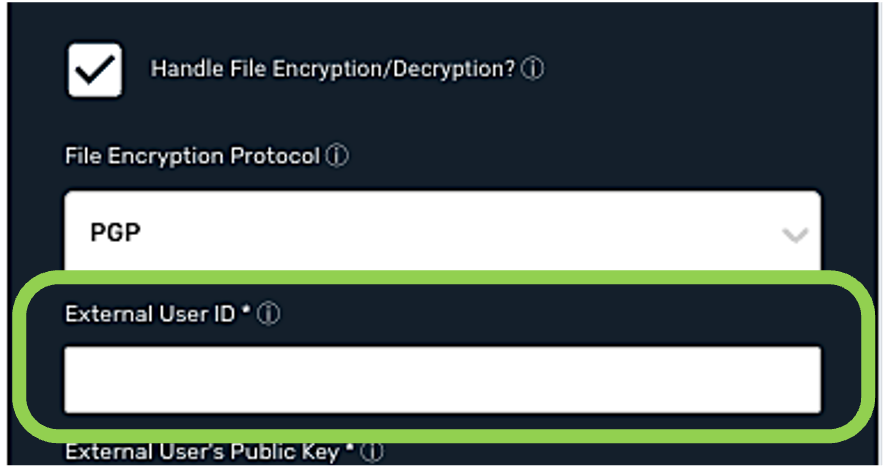
-
Enter the public key will be used for file encryption/decryption in the External User's Public Key field.
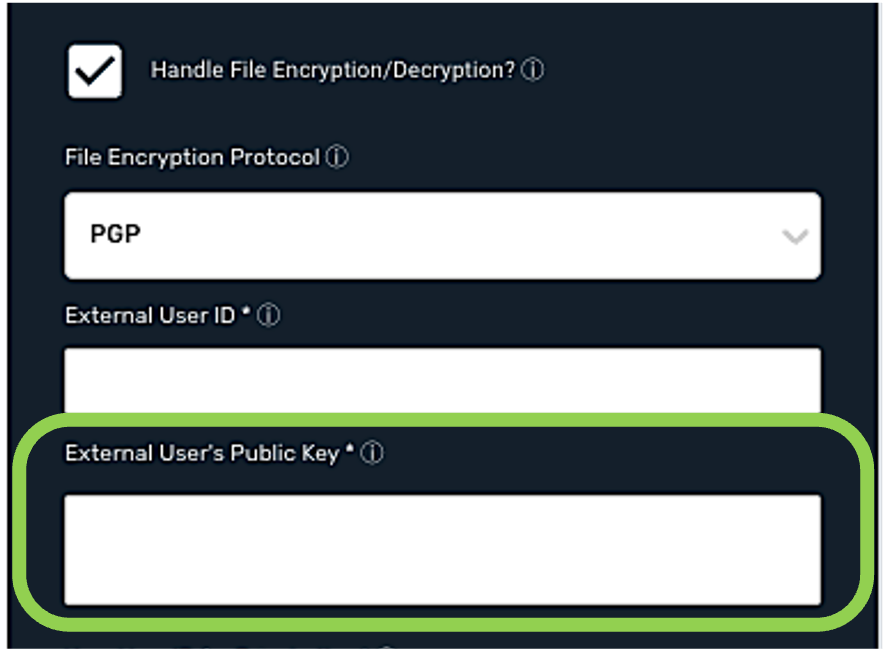
-
Enter the user ID that was used to generate the PGP private key in the Your User ID for Private Key field.
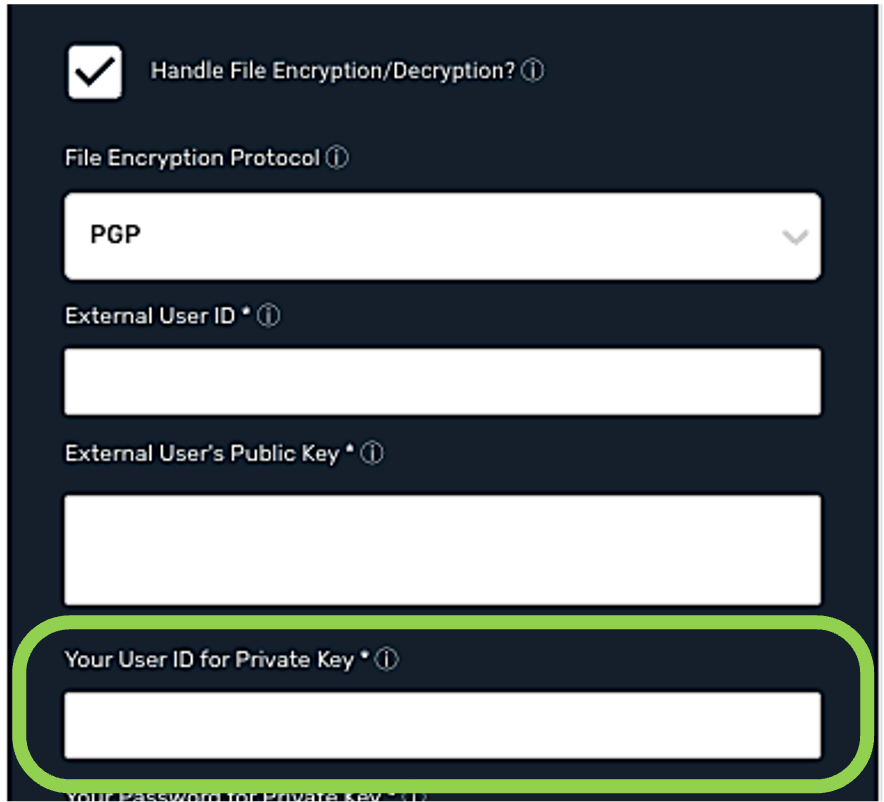
-
Enter the password for the user ID in Step 5 in the Your Password for Private Key field.

-
Enter the PGP private key that will be used to encrypt/decrypt files in the Your Private Key field.
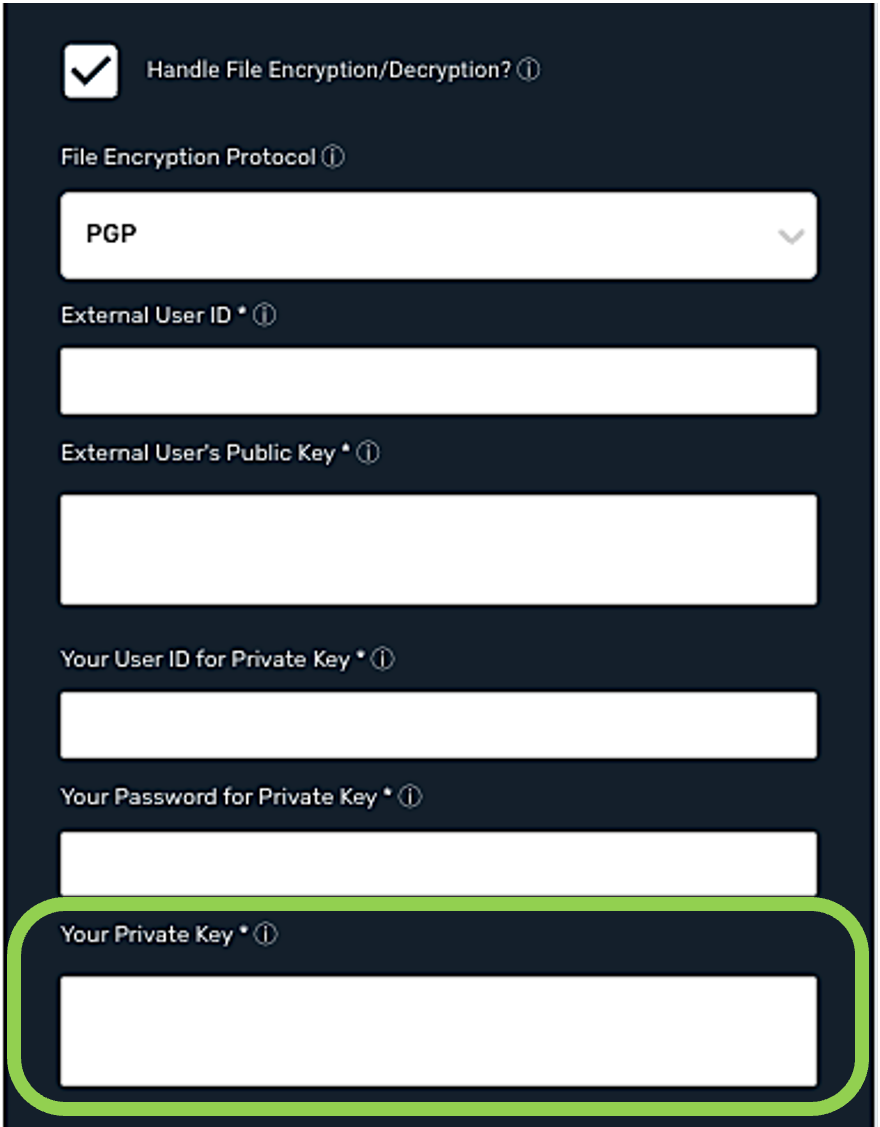
-
-
1.4 Save and Create the Dropbox Credential
-
Once all of the relevant steps in the above sections have been completed, click
at the bottom of the Add New Credential screen to save the credential and all entered information.
-
The newly added credential will now appear in a tile on the
screen and can be selected for use with a new data source or destination.
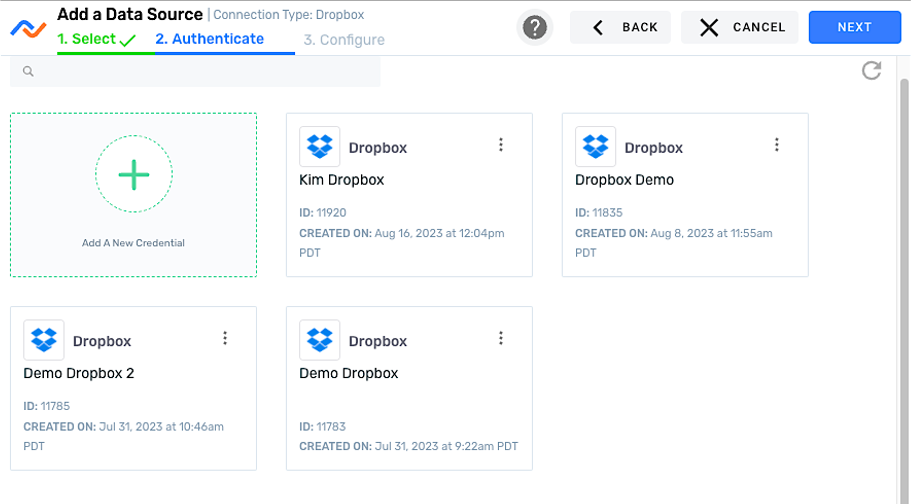
2. Add a Dropbox Data Source
-
Log into Nexla with your provided credentials to view the Nexla Dashboard.
If you need credentials, contact support@nexla.com.
-
Select
 from the menu on the left.
from the menu on the left. -
Click
 in the upper right corner to begin adding a new data source.
in the upper right corner to begin adding a new data source. -
Select
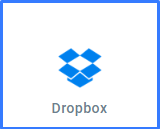 , and click
, and click in the upper right corner of the screen to begin adding Google Drive data source.
2.1 Configure the Data Source
-
Find the Dropbox location from which Nexla should read data. Expand files as necessary by clicking the
icon next to each.
-
To select a file, hover over it, and click the
button that appears.
Once a file is selected, the button will display
, and the path of the selected location will be shown at the top of the list.

2.2 Schedule Data Source Scanning
-
In the Advanced Settings menu on the right, use the Scheduling pulldown menu to specify how often Nexla should fetch data from the source.
The default setting configures Nexla to fetch any new data from the source once every day.
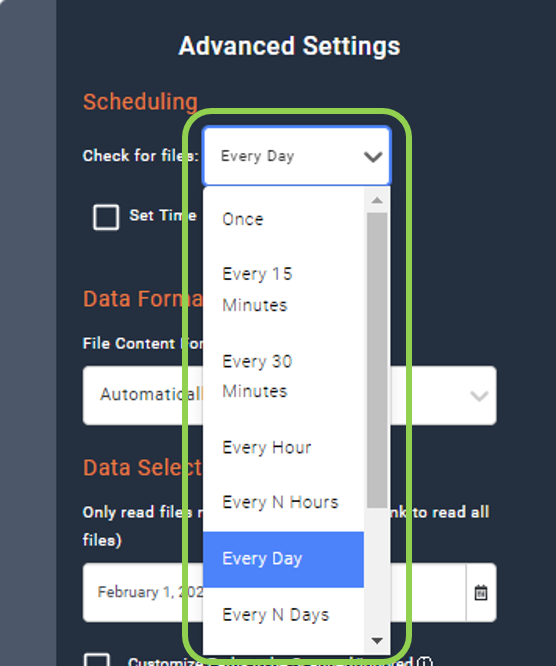
- For options such as "Every N Hours" and "Every N Days", use the additional pulldown menu that appears when these options are selected to specify N in defining the fetching frequency.
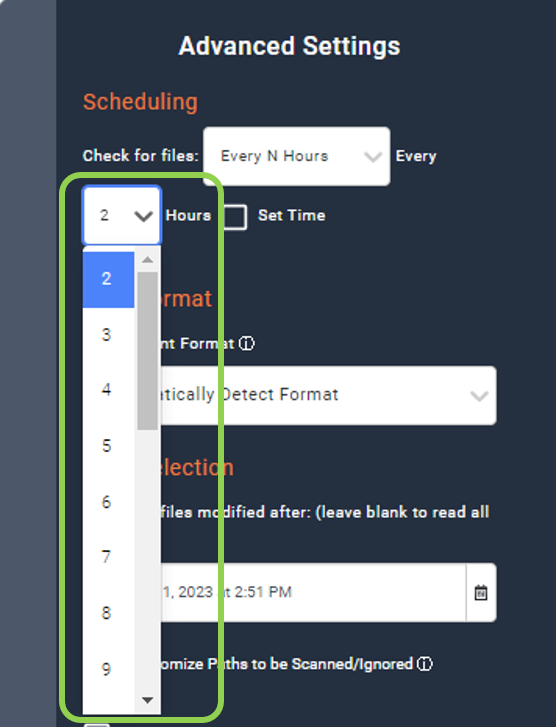
-
Optional: To set a specific time at which Nexla should fetch any new data from the source, check the
box, and type or use the pulldown menus to enter the desired time.
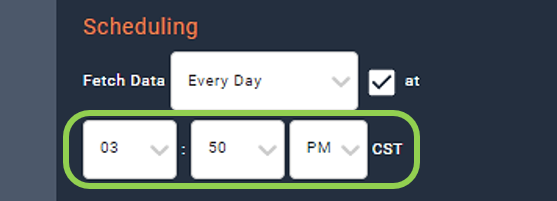
-
Optional: Use the Advanced Settings menu on the right to access additional settings for the source, including file scan scheduling and options related to text files and delimiter-separated values.
-
Once all needed files have been selected, click
in the upper right corner.
2.3 Confirmation
-
The confirmation page indicates that the Google Drive data source has been successfully added.
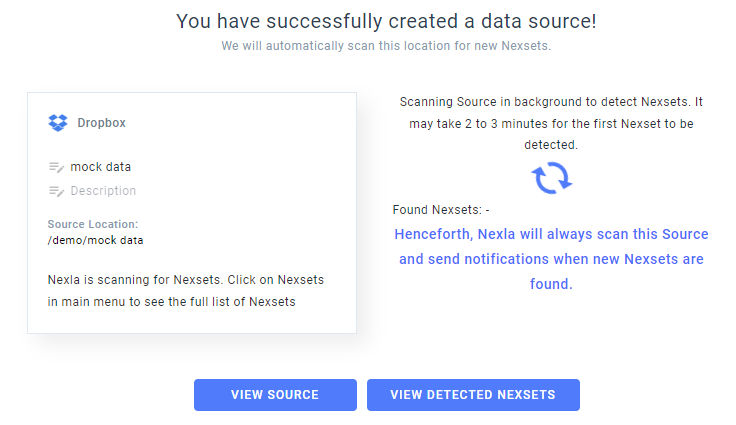
-
Optional: Edit the name of the data source by clicking on it and entering the desired text.
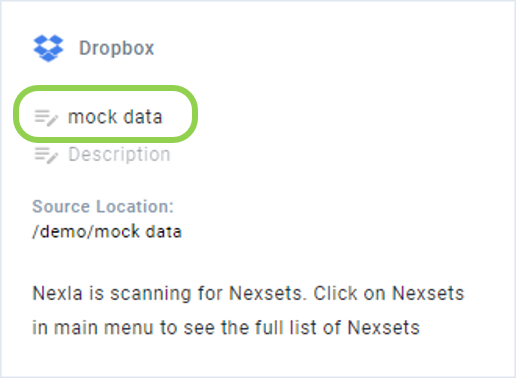
-
Optional: Add a description of the data source by clicking on
below the source name and entering the desired text.
-
-
To return to My Data Sources, click
 in the upper right corner.
in the upper right corner. -
To view the newly created data source, click
 .
. -
To view Nexsets detected in the newly added source, click
 .
.
-